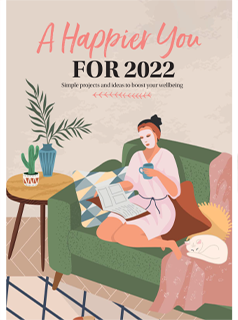Practising yoga with awareness is a positive way to release emotions and heal old wounds. Try this relaxing flow from yoga guru Sue Fuller and let go…
Yoga is kind and nurturing, yet it also brings deep physical strength. The practice helps to balance our emotions and promotes overall health and mental wellbeing. When we feel healthy, we are naturally more resilient and positive and it is easier to let go of negative habits, thoughts or emotions.
Through becoming mindful in our yoga movements we connect with ourselves on a deeper level, which in turn, allows us to make better decisions. These choices extend way beyond the parameters of the yoga mat and influence our diet, lifestyle, friendship choices, work and wellbeing, all of which have a positive knock-on effect.
By learning different techniques, we are able to identify negative emotions and work to release them – something we may end up doing unconsciously.
Even on our yoga mats we are constantly experiencing and being exposed to change (postures can feel different daily or the same posture can even feel different during the same session) and discovering this on our mats helps us accept and cope with change when we are not on our mats.
There is no one technique or practice that will heal old wounds, but it is through continuously rolling out the yoga mat and integrating the practices into everyday life that these deep and profound benefits are experienced. The following selection of poses include nurturing and strengthening ones which, when practised regularly, will help immensely when it comes to releasing emotions and healing old wounds.
Utthita balasana – Extended child
When in this pose, take the time to breathe slowly and completely, scan through your body and notice how you are feeling, both physically and emotionally. Picture your inhalation travelling up your spine and your exhalation travelling down your spine, exiting your body through the sitting bones. Send all negative energy, down and out through your body with each exhalation.
1. Begin kneeling, relax your body forward and rest your forehead to the ground. Extend your arms forward and keep your hands on the floor, a little wider than your shoulders.
2. Stay here for 20 or more complete breaths.
3. If you find this posture uncomfortable, lie on your back and draw your knees in towards your chest instead.
Majaryasana – Cat variation
This posture flows beautifully with the breath. It strengthens the core and helps to remove blockages and stagnant energy, so that fresh energy can travel around the body. Focusing on the breath helps to clear the mind and brings a meditative quality to the practice.
1. From extended child’s pose, move up onto all fours. Ensure your hands are under your shoulders and your knees are under your hips. Draw your navel towards your spine to protect your lower back.
2. As you inhale, lift your right arm with your left leg, and as you exhale, draw your navel back towards your spine and lower your arm and leg. Repeat, lifting your left arm and right leg and then continue to work alternate sides for 10 complete breaths.
3. As you synchronise your breath and movement allow the breath to feel as though it flows through your body, assisting with each movement.
Urdhva mukha svanasana – Upward facing dog
This posture is perfect for opening the chest and removing negative emotions that could be stored in the heart area of the body.
1. From the previous cat variation, stretch your arms forwards as far as you comfortably can, keeping your knees at right angles to your calves, then transfer your weight onto your hands, whilst releasing your hips towards the floor. Adjust accordingly to make this posture comfortable.
2. If it feels uncomfortable, relax to the ground and come into a gentle cobra, placing your forearms to the ground.
3. To perform the complete posture, push down into your hands, lift your hips from the floor and rest on the tops of your feet and hands. Whatever variation you are performing, keep your neck in line with your spine and your lower back long.
4. Breathe for five complete breaths, feeling that you are opening your heart with each breath you take and then return to extended child’s pose.
Adho mukha svanasana – Downward facing dog
This posture is great for strength, flexibility and determination.
1. Begin on all fours, then move your hands forwards at least a hands length. Curl under your toes and slowly unfold your legs. As you do so push the floor away with your hands, so that you create a triangular shape with your body and the ground.
2. Breathe slowly and completely through your nose. As you inhale, draw your pelvic floor up and, as you exhale, draw your navel back towards your spine, relax your shoulders and stay here for five complete breaths.
3. Although this posture is challenging, avoid tensing the body while performing it. Instead, work to soften areas that feel tense so that you use your inner strength to remain in the posture rather than your muscular strength.
Virabhadrasana II – Warrior 2
This posture is practiced for strength and power – strength to do the right thing and the power to overcome obstacles.
1. From downward facing dog, turn your left heel in towards the centre of your yoga mat, step your right foot forward between your hands, then lift your torso up and rotate it 90 degrees to the left. Lift your arms so that they are level with your shoulders and look along your right arm. Hold for five or more complete breaths, then return to downward facing dog and repeat, stepping forward with the left leg.
2. After you have performed Warrior 2 with the left leg, move back into extended child’s pose and repeat the whole sequence twice more.
3. When you have completed three rounds, take a few moments to lie on your back, breathing slowly.
Sue Fuller is a leading yoga teacher and writer. She is a course author for the British School of Yoga and the creator of the Yoga 2 Hear range or audio yoga classes. For more information, visit yoga2hear.co.uk























